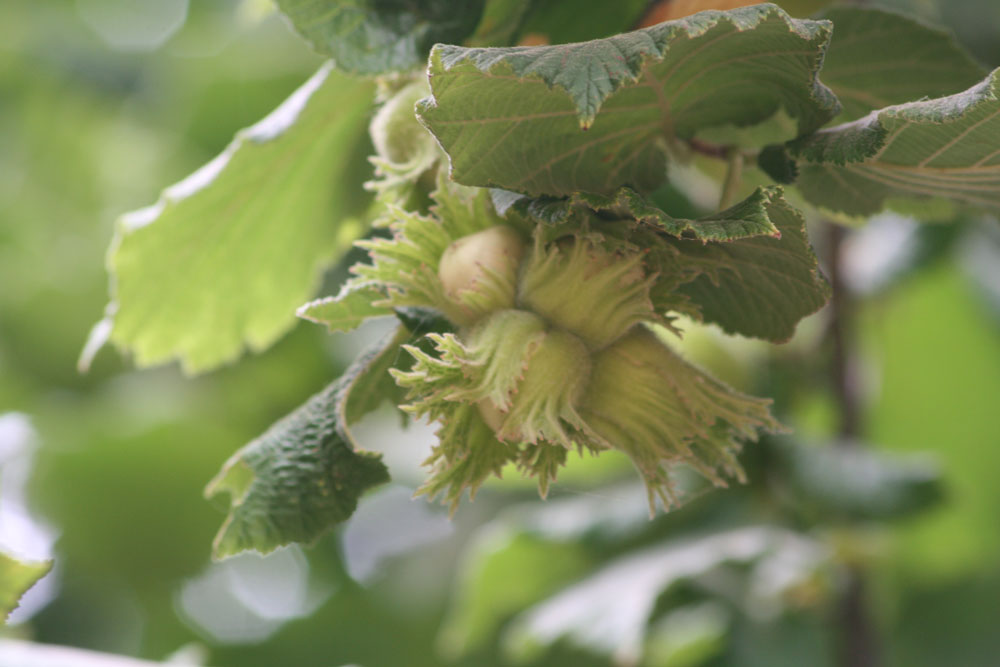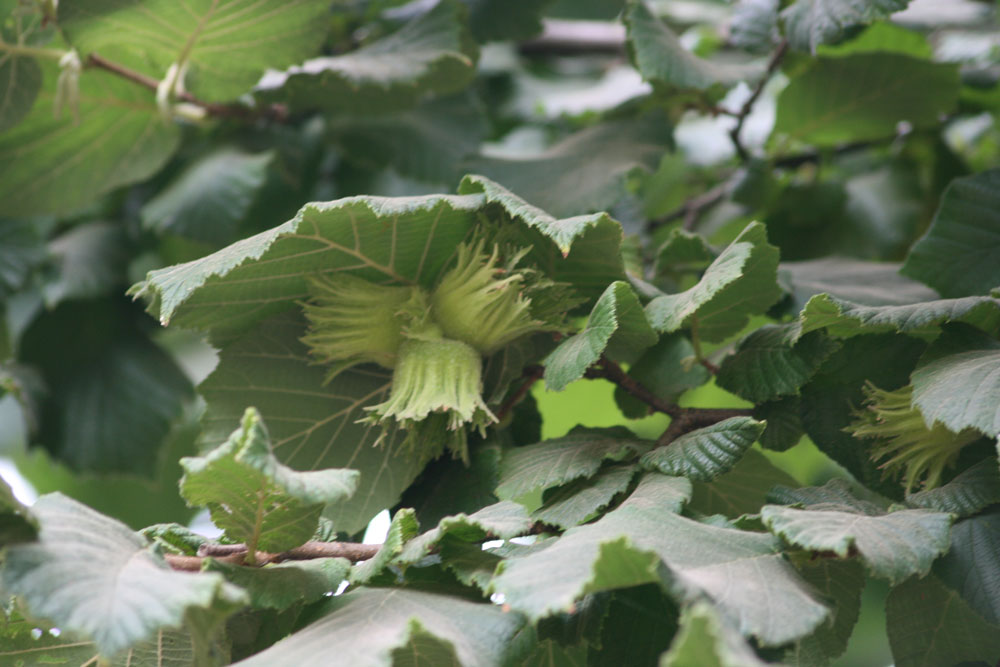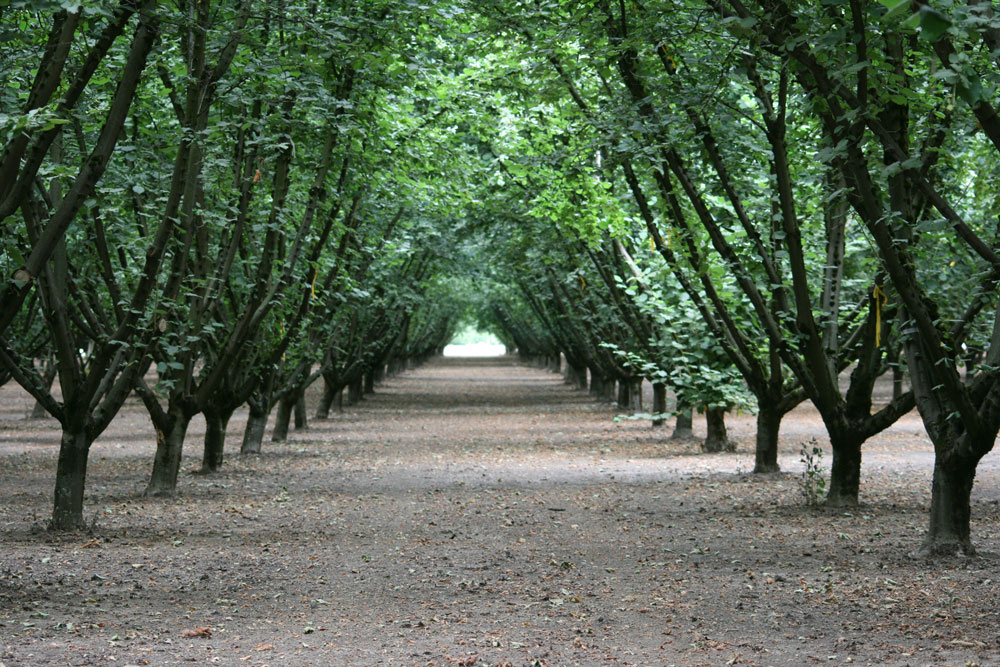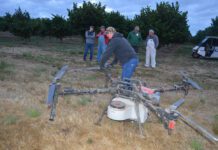
There are several different methods for propagating hazelnuts. Two of the methods growers can try is with cuttings or by layering. There are also different techniques within each method.
Before propagating hazelnuts, it’s important to note that most of the new varieties of hazelnuts that come from the Oregon State University (OSU) breeding program are protected by plant patents. These varieties cannot be legally propagated for commercial use without a license, whether the plants are intended for use by the grower themselves or for sale to other hazelnut growers. Contact OSU for more information about licensing. With that said, the following is a look at growing new plants using cuttings.
Softwood Cuttings
Softwood cuttings are small shoots taken from the current year’s growth off of a mother plant, or from a stock plant kept specifically for propagation purposes. Take softwood cuttings during the active growing season. Use root suckers because they will root and grow more vigorously than shoots taken from other parts of the tree such as the trunk or branches. Choose sucker shoots that are roughly the diameter of a pencil and about six inches long. Remove the shoots using a clean, sharp tool.
While collecting the shoots, keep them moist and out of direct sunlight. You can use a bucket half-filled with damp sawdust. Stick the cuttings into the sawdust as you work. Keep the bucket in the shade or cover it with a damp towel as you move from tree to tree. You don’t want the cuttings to dry out before you get them stuck into the growing medium. It’s also important to keep the shoots oriented as to which end is the top and which is the bottom. Cuttings will not root if they are stuck upside down. For reference, buds tend to point up.

Dip the bottom 0.5 to 1 inch of the shoots in rooting hormone containing indole-3-butyric acid (IBA), which is a synthetic auxin hormone root stimulant (auxin is a natural plant hormone that causes cells to elongate in shoots and aides in regulating plant growth.) IBA comes in different concentrates. Choose one with a concentration of 500 to 1,000 parts per million (ppm). Use a dibbling tool or your fingers to first form a hole and then stick the shoot into the porous growing medium; a peat moss and perlite mix works well. Make the hole a little larger than the diameter of the cutting. That way, the rooting hormone doesn’t rub off when sticking the cutting. Place the bottom end of the cutting in the hole and gently firm the soil around the stem.
Hazelnut softwood cuttings root best during the late spring and early summer growing period. May and June are good months to try your hand at rooting softwood cuttings. Roots should form sometime between the second and eighth week after sticking.
Micropropagation is a technique used in a sterile laboratory setting, although there are DIY kits available for growers who want to give it a whirl at home.
As the name suggests, micro-cuttings are tiny. They can be an inch or less in length. Growers can order micro-cuttings either rooted or unrooted. If ordering the unrooted cuttings, they can be coaxed into rooting any time of year with artificial light, although delivery of cuttings during the spring and summer growing season is the most popular.
Hardwood Cuttings
Like with softwood, hardwood cuttings should be taken from root suckers for best rooting and better performance later in the field. Growing hazelnut trees from hardwood cuttings is both simpler and more difficult than rooting them from softwood cuttings. It’s simpler because hardwood cuttings are taken during the tree’s dormant season, making watering easier to manage. It’s more difficult because hazelnut hardwood is notoriously tough to root.
However, where there’s a will, there’s a way. According to OSU archival content written by Jeff Olsen and Dave Smith, there has been some hardwood cutting success with hazelnuts by choosing late-season, underground growth. Choose underground suckers found growing in the sawdust mound around trees used for tie-off layering, or underground around stock plants. These suckers are tiny with a diameter as small as 0.25 inches and a length of four to eight inches. They may root more easily than typical aboveground tissue because they are etiolated.
This means the suckers have never been exposed to sunlight and the open-air environment, Olsen and Smith explain.
Gather the tiny suckers and cut them into even smaller lengths, around two inches. Be sure to keep track of which end is the top (apical) and which is the bottom (basal) so you can orientate them correctly in the growing medium. If other chores interrupt before you get the freshly cut suckers stuck into cell trays or small pots, you can place them in a plastic bag and refrigerate them for a brief time.

Hardwood cuttings benefit from 75 degrees F bottom heat from a propagation mat. They take longer to root than softwood cuttings. Expect to wait six to eight weeks for new leaves to begin growing, a sign of successful rooting.
Care of Cuttings
Keeping moisture levels stable in both the soil root zone area and in the air around the cuttings is imperative for rooting success. Nurseries use misters or fog systems to control humidity levels. This requires either a greenhouse or an indoor growing facility with artificial lights set on timers to replicate natural daylight hours.
Both softwood cuttings and micro-cuttings root quicker and easier with the aid of bottom heat from a propagation mat. Set the thermostat to 75 to 80 degrees F.
Once cuttings are rooted and showing new growth, it’s time to repot them into four- to five-inch nursery containers. Gradually acclimate the young trees away from the misting system, but continue to grow them inside a greenhouse.
“Wean the rooted cuttings from the mist environment so they have leaves that are adapted to general greenhouse conditions,” Olsen and Smith said. “Attention to detail and gradual change in the growing conditions are crucial. Hazelnuts do not tolerate sudden shifts in humidity and light intensity and will stop growing if they encounter too much change. Eventually, you will grow the new plants in the greenhouse with appropriate watering, fertilization and pest control.”
Keeping the young trees healthy takes careful monitoring of soil moisture levels. Roots cannot dry out or become waterlogged. Protect the cuttings from freezing temperatures before and after rooting. Plants grown in containers are more adversely affected by freezing temperatures than plants growing in the insulated ground.
Although growing hazelnut trees from cuttings requires more attention and skill than layering techniques, growers might find they enjoy the challenge.















